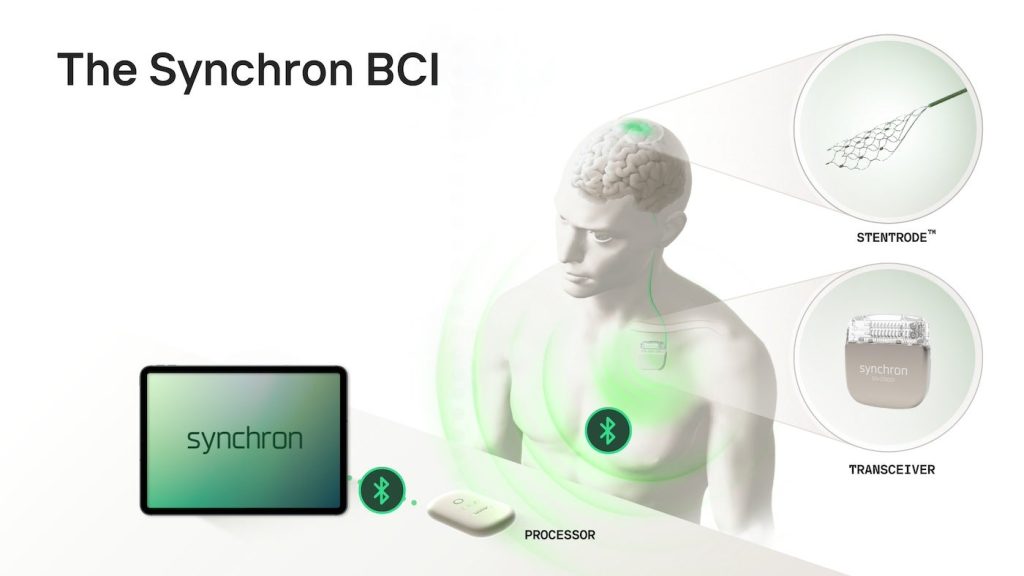

Apple is developing technology that will allow users to control iPhones, iPads, and Vision Pro headsets with their brain signals, marking a major step toward hands-free, thought-driven device interaction. In partnership with brain-computer interfaces (BCIs) startup Synchron, Apple is working on a universal standard to translate neural activity into digital commands.
The initiative is initially focused on empowering individuals with conditions such as ALS and severe spinal cord injuries to navigate and operate their devices without physical gestures.
Synchron’s brain implant connects thoughts to Apple devices
Synchron’s device, called the Stentrode, is a stent-like implant placed in a vein near the brain’s motor cortex; it picks up neural activity and translates it into commands, such as selecting icons on a screen. That brain signal then works with Apple’s Switch Control feature, a part of its operating system that lets alternative input devices control iPhones, iPads, and the Vision Pro headset.
The Wall Street Journal highlighted the case of Mark Jackson, an early user with ALS living outside Pittsburgh, who used his Vision Pro headset to explore a virtual mountain scene in the Swiss Alps. Jackson described the experience as vivid, saying he could feel his legs shake despite being unable to stand.
Apple to release software standard to improve performance
While the technology is promising, early users like Jackson have found the interface significantly slower compared to typical smartphone or computer interactions, according to The Wall Street Journal. To address these performance challenges, Apple plans to introduce a dedicated software standard later this year, aiming to simplify the development of tools specifically designed for brain implants.
“This marks a defining moment for human-device interaction,” said Synchron CEO Tom Oxley in a statement. “BCI is more than an accessibility tool, it’s a next-generation interface layer. Apple is helping to pioneer a new interface paradigm, where brain signals are formally recognized alongside touch, voice and typing.”
Brain-control tech offers Apple a sales boost after some product challenges
Synchron has implanted its device in 10 people since 2019. Investment bank Morgan Stanley estimates that approximately 150,000 people in the US could be early candidates for this technology, according to The Wall Street Journal.
Apple’s foray into brain-control technology comes at a crucial time for the company. Its iPhone manufacturing and handset price, as well as stock price, has been part of the discussion about tariffs’ impact on tech products. The Siri delays and related news were not bright spots for the tech giant. And, the highly anticipated Vision Pro, launched with significant fanfare, has not achieved commercial success.
Apple’s work with Synchron signals a long-term bet on redefining human-device interaction. Whether this groundbreaking technology will also translate into sales growth for Apple remains an open question.


